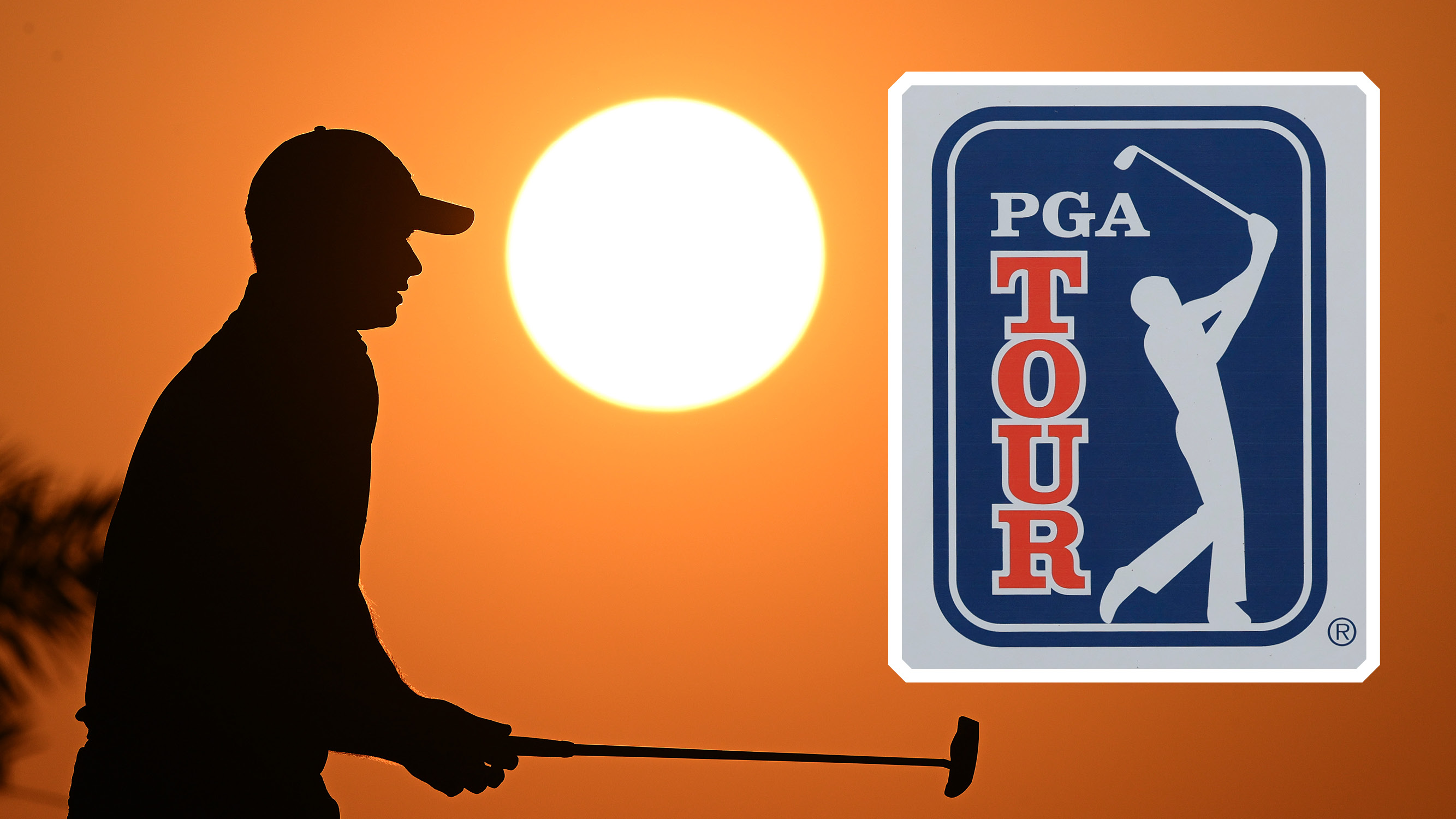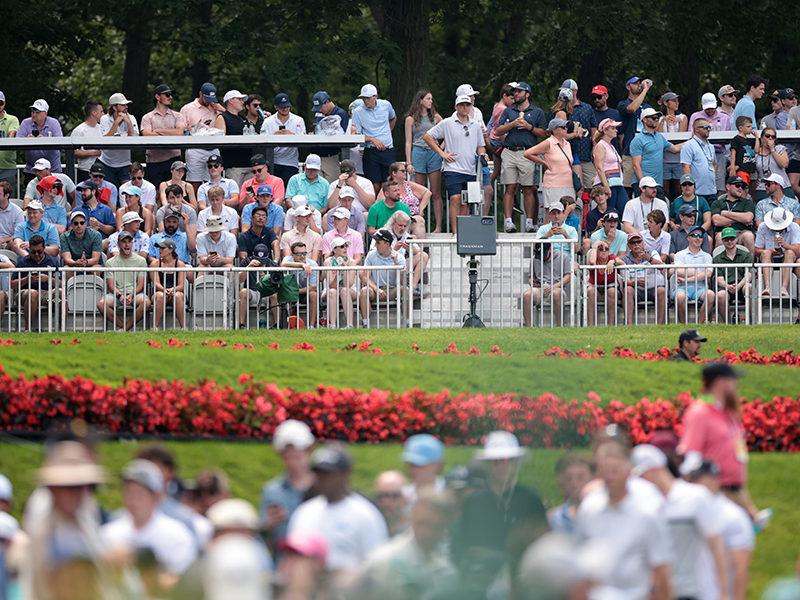Pace Of Play Is A Serious Problem On The PGA Tour... And This Data Proves It!
In this experiment, I recorded the time taken to play shots at three PGA Tour events and the data highlighted a clear issue...


Pace of play is a highly-debated topic at all levels of the game. Slow play can be frustrating, causing players to lose focus or enjoyment of the sport, but it can also make the viewing experience a lot tougher to watch.
Accusations of slow play have been levied against some big names in the sport, and it got me thinking about the reasons behind it. After some initial analysis, I turned to the PGA Tour pace of play policy, which I will come on to later.
With the rulebook in hand, I set about investigating the pace of play for a number of marquee and featured groups over three different PGA Tour events, and the results highlighted one area of the game which is causing a significant problem...
What Does The PGA Tour Handbook Say About Pace Of Play?
The PGA Tour pace of play policy is confusing at best, but I believe also overly protects the players from slow play penalties. To summarise, a player has up to 40 seconds to take their shot on any given hole, unless they are the first to play (in which case they get 50 seconds).
That in itself seems a fairly reasonable and easy to apply policy, but when you consider that players are only timed when their group becomes 'out of position', the jeopardy for taking too long is somewhat lost.

The viewing experience for spectators both on the course and at home watching on television should be much higher on the priority list
I would interpret that as 'well, as long as everyone is doing it, nobody should ever get penalised', when in fact it I it would perhaps make more sense to time every player, on every shot, in a bid to eradicate slow play altogether.
The penalties for stepping over the time limit (called 'bad times') are intended to increase with the regularity of the offence being committed. The scale starts with a warning on the first occasion, a penalty stroke on the second, two penalty strokes on the third and ends with a disqualification after four misdemeanours.
Subscribe to the Golf Monthly newsletter to stay up to date with all the latest tour news, equipment news, reviews, head-to-heads and buyer’s guides from our team of experienced experts.
However, the fact that the PGA Tour hasn't given out any slow play penalty strokes in a significant period of time would suggest there isn't a problem... but this data snapshot suggests differently.
The Research
I settled in to watch the marquee or featured group coverage over the course of three different PGA Tour events, and the results demonstrated exactly what I suspected. The method chosen for this experiment was simple, I would time the period that it took for players to hit their shot and record the results.
The rationale behind choosing marquee or featured group coverage is that there are very few breakaways, so you can get a relatively clear picture of a group or two in real-time. This is where the policy becomes slightly flawed, however. In order to start the timer, you must first ascertain, perhaps subjectively, when the player is free to play without distraction.
This was simpler to achieve with an increased degree of accuracy on the putting green, as you could see the area clearly and players were logically free to play when the player in front of them had played their putt and either picked it out from the hole or re-marked it.

Putting appears to be one of the biggest problems when it comes to slow play on the PGA Tour
Over the course of my research, I recorded a total of 16 players and found that there were 26 occasions where the 'bad time' was exceeded on the putting green. Four of the 16 players overstepped this mark on at least one occasion when putting, and the worst offender accrued eight individual instances in a nine-hole period.
For players who were clocked exceeding the acceptable time to play their shot on the greens, it would seem that certain processes and habits were potentially causing the issue. Aim Point was one particular method that seemed to take a substantial period of time to conduct for some players, while the marking and re-marking of the golf ball on the same green before putting also bumped up the time taken.
Some of the times recorded weren't even close to being deemed appropriate either, with two players registering times of more than 85 seconds to prepare for a putt, and 14 out of the 26 recorded infringements coming in at one minute or more.
While this data was accumulated using a relatively small sample of players across the three tournaments, it would be reasonable to assume a more widespread problem across the tour based on the stark findings.
What Are The Potential Solutions?
Clearly, there is a lot on the line for players at the highest level. Whether you are a top-tier pro vying for millions of dollars, or someone who is battling to keep their PGA Tour status, you can understand them wanting to ensure they have the best chance to make the putt.
I go back to my earlier suggestion of timing all players, all of the time, because I believe that will ensure all participants are mindful of their own speed and impact on the pace of play.
On the greens specifically, introducing some simple measures could help to speed up an area of the game which is the root cause of many slow play issues. For example, only allowing players to mark their ball once on the green would certainly speed up the process.

Grandstands and viewing galleries are now common place at PGA Tour events, but is slow play negatively impacting the spectators experience?
Under this suggestion, players can mark their ball, read the line, and when ready place the ball down (within the agreed time parameters). The ball is then live and cannot be re-marked. If the initial putt misses, players keep their turn and play until they hole out.
Another suggestion would be to start the timer for the first player as soon as their ball is marked on the green (giving them slightly longer under the current pace of play policy rules) and ensuring they stick to the allotted time allowed. Once they have holed out and picked the ball out of the cup, the next player's time starts and the process is repeated.
In line with current policy, an overstep that results in a 'bad time' would lead to a warning and then penalty strokes. While this might seem over-bearing, the implementation of a policy that is more strictly applied would ideally be enough of a deterrent that means penalty strokes are not necessary.

Baz joined Golf Monthly in January 2024, and now leads the instruction section across all platforms - including print and digital. Working closely with Golf Monthly's Top 50 Coaches, he aims to curate and share useful tips on every aspect of the game - helping amateurs of all abilities to play better golf. Baz also contributes weekly to the features section, sharing his thoughts on the game we love and the topics that matter most. A member at Sand Moor Golf Club in Leeds, he looks forward to getting out on the course at least once a week in the pursuit of a respectable handicap.
Baz is currently playing:
Driver: Benross Delta XT
3-Wood: Benross Delta XT
Hybrid: TaylorMade Stealth 4 Hybrid
Irons: Benross Delta XT 5-PW
Wedges: TaylorMade RAC 60, Callaway Jaws MD5 54
Putter: TaylorMade Spider Tour